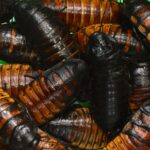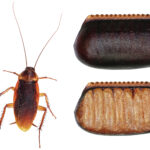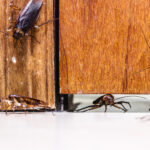How Can We Help?
What are the most common types of cockroaches that infest homes?
In the UK, the most common cockroaches that infest homes are the German cockroach (Blattella germanica), the Oriental cockroach (Blatta orientalis), and the American cockroach (Periplaneta americana). Each of these types has unique traits and behaviors that help them thrive in domestic settings.

The Oriental cockroach, also known as the black beetle or waterbug, is another common species in the UK. These cockroaches are larger and darker than German cockroaches, with a shiny, dark brown to black appearance. They prefer cooler, damp spots and are often found in basements, cellars, and around plumbing. They reproduce more slowly than German cockroaches, so infestations develop more gradually but can still become a big problem if ignored.
The American cockroach, though less common than the German and Oriental types, can also be found in UK homes. These large, reddish-brown cockroaches with a yellowish figure-eight pattern on the back of their heads are usually found in warm, moist environments like boiler rooms, drains, and sewers. Their size and ability to fly can be especially alarming when you find them indoors.
Where are these common cockroach species typically found in homes?
German cockroaches are most commonly found in bathrooms and kitchens, where they can easily access food and water. They prefer warm, humid environments and are adept at hiding in small crevices and cracks near sinks, stoves, and other appliances. They can also be found behind cabinets, inside pantries, and within any cluttered spaces that provide both food and shelter. Their propensity to stay close to food sources makes these areas prime locations for infestations.
Oriental cockroaches, also known as waterbugs or black beetles, prefer cooler, damp environments. They are frequently found in basements, cellars, and crawl spaces, where the conditions are more suitable for their survival. They can also be located near plumbing fixtures, under sinks, and around drains. Their attraction to moisture means they are often found in areas prone to leaks or with poor ventilation. These cockroaches are slower movers compared to their German counterparts and tend to congregate in dark, damp corners of homes.
American cockroaches, the largest of the three, are typically found in warm, moist areas. They are often discovered in
Effective cockroach control involves identifying and addressing these favored habitats. Maintaining cleanliness, fixing leaks, reducing clutter, and sealing entry points can significantly mitigate the risk of infestations. Understanding where each species prefers to live within a home allows for targeted pest management strategies that can help keep these resilient pests at bay.
What are the key differences in nesting and hiding behaviors between the common cockroach species?
The key differences in nesting and hiding behaviors among the common cockroach species—German, Oriental, and American cockroaches—stem from their unique preferences for environmental conditions and their specific survival strategies.
German cockroaches (Blattella germanica) are small, fast, and highly adaptable, preferring warm, humid environments. They tend to nest and hide close to food and water sources, such as in kitchens and bathrooms. German cockroaches are notorious for squeezing into tiny crevices and cracks near sinks, stoves, and refrigerators, as well as behind cabinets and inside pantry shelves. They are adept at finding shelter in cluttered spaces and can be found in appliances, electrical outlets, and even within wall voids. Their nesting sites are typically within a few feet of their food sources, allowing them to forage quickly and safely.
Oriental cockroaches (Blatta orientalis), also known as waterbugs or black beetles, prefer cooler, damp environments and are often found in basements, crawl spaces and cellars. Unlike German cockroaches, they are less likely to be found in kitchens and more often in areas with high moisture levels, such as near plumbing fixtures, under sinks, and around drains. Oriental cockroaches are slower and less agile than German cockroaches, and they tend to congregate in dark, damp corners where they can remain undisturbed. Their nesting sites are usually in hidden, moist areas that provide protection from predators and harsh environmental conditions.

Understanding these differences in nesting and hiding behaviors is crucial for effective pest management. We here at Youngs Pest Control provide targeted control measures that focus on the specific habitats and behaviors of each species to eliminate infestations and prevent future occurrences.
